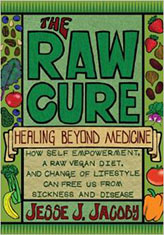
The beauty of Red Cabbage
Cabbage is one of the oldest known vegetables, dating back some 4000 years, this beautiful and versatile vegetable is thought to stem from wild cabbage, a more open leaved variety than the head of cabbage we see more commonly now. Once, highly regarded by the Greek and Romans for treating many ailments, it has since lost its placing in more modern times.
However, a closer look may restore its popularity. Red cabbage is rich in antioxidants, glucosinolates and has strong anti-inflammatory properties. The high antioxidants include anthocyanins and a phytochemical called indole, science has shown a link between Indoles and a reduction in cancer, in particular, breast cancer.
Another benefit in eating red cabbage is from the glutamine content. This essential amino-acid is known to be very beneficial for those people with gastro-intestinal ulcers. The glutamine is said to heal the ulcers by reducing inflammation and pain, further benefits are found in those that suffer with leaky gut syndrome (intestinal hyper-permeability), the benefits are greatest when drinking cabbage juice.
The beautiful pigment found in red cabbage comes from anthocyanin a polyphenol, which is rich in antioxidants and anti-inflammatories. Anthocyanin has been shown to help fight the build up of plaque in the brain, which leads to Alzheimer's disease, the leading cause of death for women in the UK.
Glucosinolates are compounds released when the cabbage is cut, chewed or damaged. These biologically active compounds are converted to isothiocyanate compounds, which are known to prevent cancer, specifically breast, colon, prostate and bladder.
Your eye health may benefit from eating red cabbage too. The beta-carotene is converted into a form of vitamin A, called Retinol, this is known to help with night vision and and nerve impulses. Lutein and zeaxanthin protects the retina and may prevent macular degeneration.

Cabbage is said have been used in Roman times to reduce the effects of a hangover. The best way to consume red cabbage to maximise the benefits is either raw, or lightly steamed. However, red cabbage is best avoided if you suffer from hypothyroidism.
What are the benefits of eating red cabbage?
Prevention of premature aging
Reduce your risk of cancer
Improve the health of your skin
Improve you eye function
Helps weight loss
Boosts the immune system
Builds stronger bones
Prevents diabetes
Improves heart health
Slows down the onset of Alzheimer's disease
Treats gastric ulcers
Prevention of premature aging
Reduce your risk of cancer
Improve the health of your skin
Improve you eye function
Helps weight loss
Boosts the immune system
Builds stronger bones
Prevents diabetes
Improves heart health
Slows down the onset of Alzheimer's disease
Treats gastric ulcers
So what is the nutrient content of red cabbage?

A quick insight into some of the vitamins and minerals and the role they play in our health.
Vitamin K
- Promotes normal healthy clotting
- Prevents heart disease and arterial calcification
- Improves vascular health, leading to fewer varicose veins
- Maintains healthy bones
- Acts as an adjunct to vitamin D
- Helps to reduce the risk of developing prostrate cancer, lung cancer, liver cancer and leukaemia.
Vitamin C
- Supports the immune system
- Increases iron absorption
- Protects cells from oxidating damage
- Helps reduce the risk of heart disease, including coronary heart disease and stroke
- Helps in the formation of collagen, carnitine and catecholamines.
Folate - Vitamin
- Promotes brain development and improves functioning
- Promotes a healthy nervous system
- Decreases risk of various cancers, including breast
- Supports a healthy cardiovascular system
- Helps nervous system development in the fetus
- Assists in the production of red blood cells
- May reduce the risk of depression
Manganese - Mineral
- Supports the formation of healthy bones through absorption of calcium
- Supports collagen production
- Helps with blood sugar control
- Contributes to the prevention of oxygen related damage and damage from ultraviolet (UV) light
- Antioxidant, fights free radical damage
- Maintains a healthy functioning thyroid gland
- Promotes metabolism of fats and carbohydrates
- Diets low in manganese have been linked to skin problems and asthma.
Molybdenum - Mineral
- Little is known about its impact on our health
- known to have a role in the activity of several enzymes in our body
- Plays a role in the proper functioning of our nervous system.


 Articles by subject
Articles by subject Recent Articles
Recent Articles






